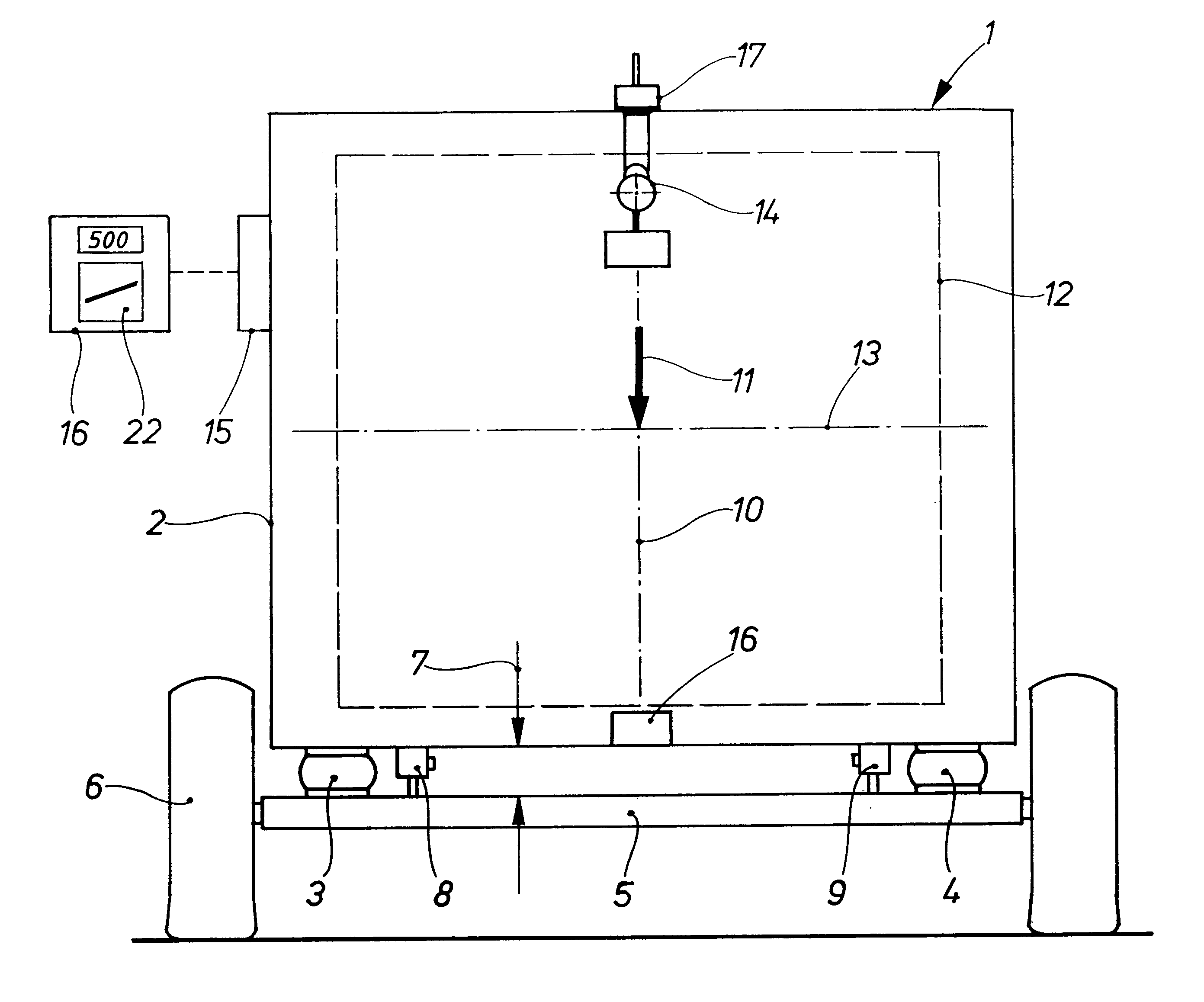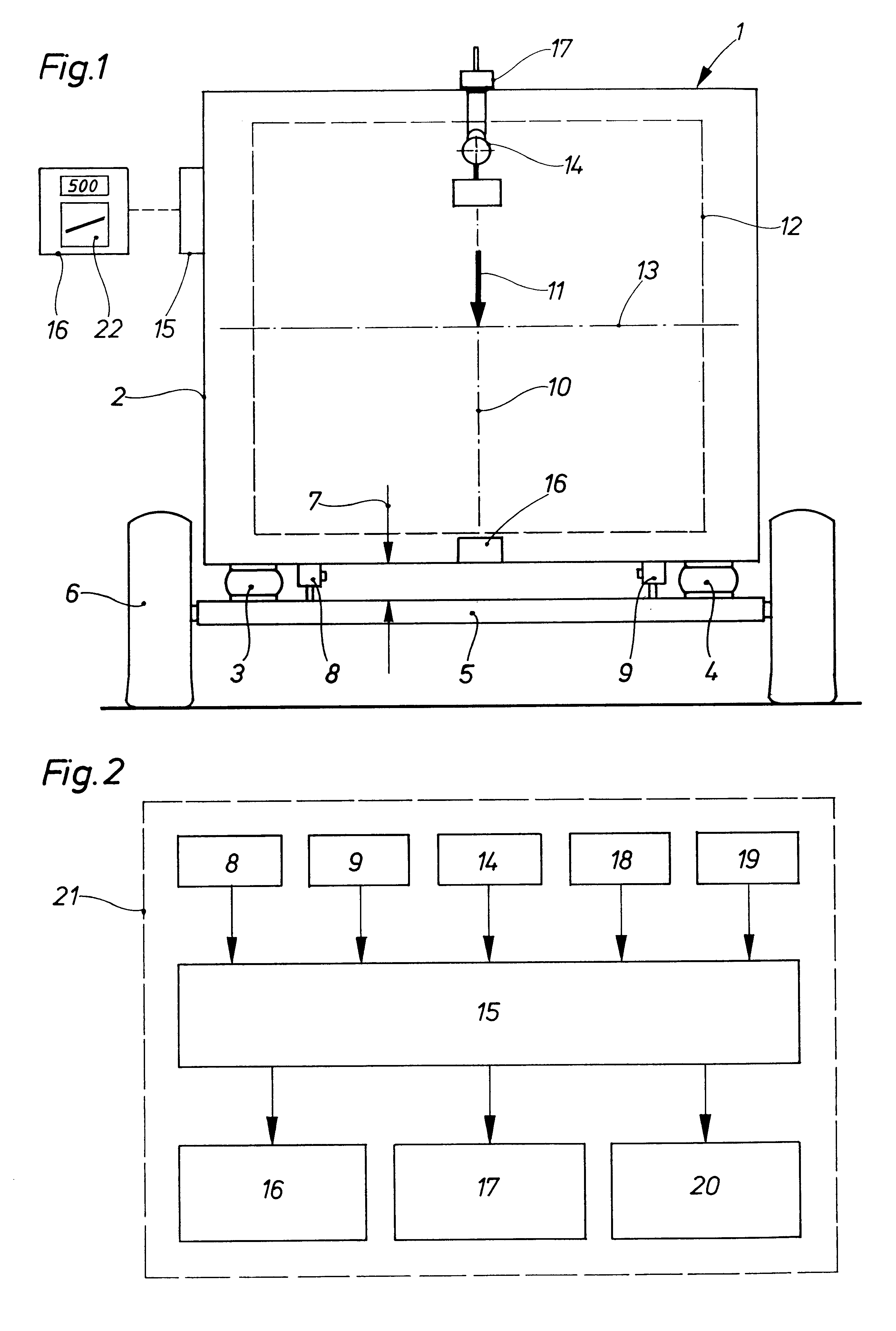Baler with a weighing device
- Summary
- Abstract
- Description
- Claims
- Application Information
AI Technical Summary
Benefits of technology
Problems solved by technology
Method used
Image
Examples
Embodiment Construction
FIG. 1 shows a round baler 1 that essentially consists of a compression chamber housing 2 with a variable or constant compression chamber for producing cylindrical compressed bales, and of a drawbar, not shown, for connecting the baler to a tractor, likewise not shown.
The compression chamber housing 2 is supported with two rubber springs 3 and 4 on a support axles 5 provided at its opposite ends with wheels 6. Upon filling of the round baler 1, the distance 7 between the compression chamber housing 2 and the support axle 5 is reduced dependent on the weight of the harvest filling the baler 1. The distance corresponding to the spring deflection is sensed by displacement sensors 8 and 9 the signals of which are used for displaying the bale weight. The sensors 8 and 9 are arranged symmetrically with respect to a vertical longitudinal central plane 10 and adjacent to respective rubber springs 3 and 4.
By evaluating the change in distances at separate sensors 8 and 9, the non-uniformity o...
PUM
| Property | Measurement | Unit |
|---|---|---|
| Weight | aaaaa | aaaaa |
| Angle | aaaaa | aaaaa |
| Mass | aaaaa | aaaaa |
Abstract
Description
Claims
Application Information
 Login to View More
Login to View More - R&D
- Intellectual Property
- Life Sciences
- Materials
- Tech Scout
- Unparalleled Data Quality
- Higher Quality Content
- 60% Fewer Hallucinations
Browse by: Latest US Patents, China's latest patents, Technical Efficacy Thesaurus, Application Domain, Technology Topic, Popular Technical Reports.
© 2025 PatSnap. All rights reserved.Legal|Privacy policy|Modern Slavery Act Transparency Statement|Sitemap|About US| Contact US: help@patsnap.com


